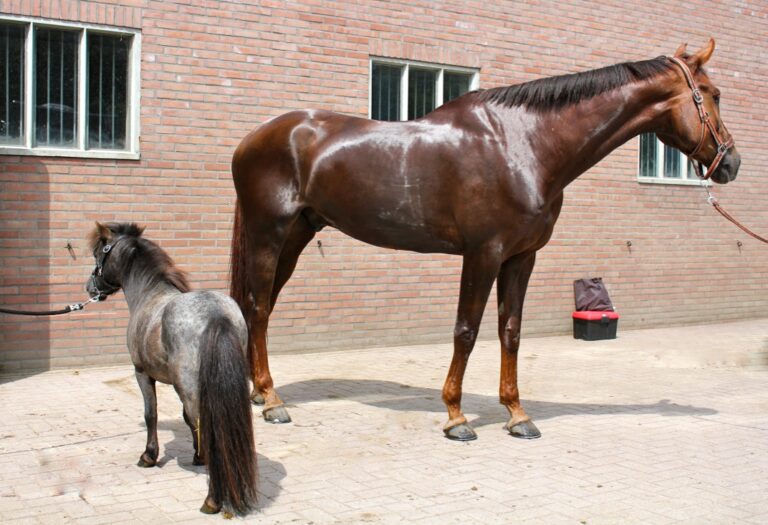A Falabella horse is not always immediately recognizable, a small pony is not a Falabella horse. Only the Falabellas with the correct accompanying documents, and the recognized registration with the old FSE Falabella Studbook Europe or the new studbook EFS European Falabella Studbook with the accompanying DNA papers can join this unique breed.
Breeding objectives and a breed standard description as established by the EFS - European Falabella Studbook have been established after coordination and approval of the mother studbook in Argentina, the ACCF. Based on a long-term view of the progression of genetic variation within the “limited pure” population, curbing inbreeding is crucial, as it is one of the causes of hereditary defects, reduced fertility and shortened life expectancy.
Since 2012, the Falabella Studbook Europe has had an additional software package for calculating the inbreeding coefficient. The results of this became visible on the updated pedigrees. Also the new EFS studbook has this software again and the pedigrees are provided with this percentage as standard.
An urgent advice is therefore to prevent even minor inbreeding in breeding. The rare and pure stock of the Falabella horses is limited, so that each individual horse is of great value for the maintenance of this unique breed. In the interest of the mares it is not allowed to cover under the 3rd year of life, also the stallions may not be used for breeding under the 3rd year of life.
The following characteristics have been described about the appearance of a correct Falabella horse:
In its origin, a Falabella horse is small and gentle, docile to people, good-natured with a healthy and strong constitution.
The construction of a Falabella horse is harmonious, balanced with a fine bone structure, slim belly and bone structure.
The shoulder height of Falabella horses measured above 3 years varies between 70 and 86 cm. To maintain their small size, this is considered an important breeding goal.
The head has fine and noble features, with large expressive eyes, a straight or slightly curved slender noble forehead.
The small ears are well placed, attentive, and pointed, slightly pointed, bent towards each other.
A slender flexible neck, sufficiently muscled and not too deep in the chest.
Shoulders with sufficient length, sloping with well-developed visible withers.
Legs : Sufficient length for a square build, well-developed joints, without soft pasterns, with well-formed, narrow, oval-shaped hooves.
The loins are well muscled, making good transitions visible. The movement also with an active front leg from the shoulder.
Croup and tail should be long, slightly sloping in a smooth line from croup, with tail carried straight.
The skin of a Falabella horse is thin and supple
The color of a Falalbella horse, within this all variations are possible, often black and brown, but you will find them in the full color palette fox, pied, palomino, pinto, gray, appaloosa
Unique hidden features: Unlike other horse breeds, the Falabella horse has seventeen vertebrae instead of eighteen, and a few fewer ribs. The heart of the Falabella is slightly larger in relation to its body compared to the standard size horse.
Since the discovery of this special horse breed in the middle of the last century, famous people have acquired this magical Falabella horse :
King Juan Carlos of Spain, the late King Hussein of Jordan, the Sultan of Brunei, Sheikh Mohammed and Sheikh Hamdan bin Rashid Al Maktoum of Dubai, Paul McCartney of The Beatles and the late US President John F Kennedy.


Welcome on the Facebookpage of Falabella Friends and MijnFalabella.nl | You can like this page if yo